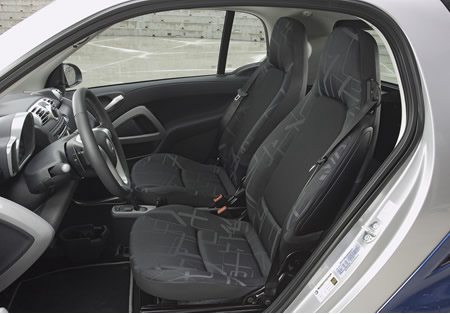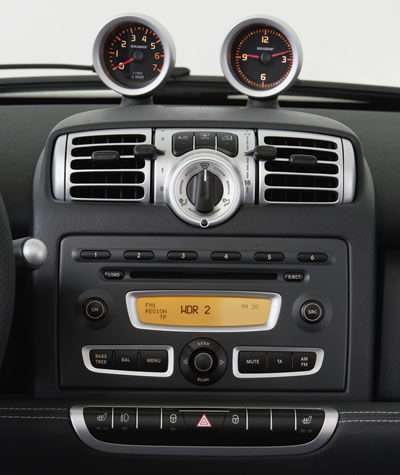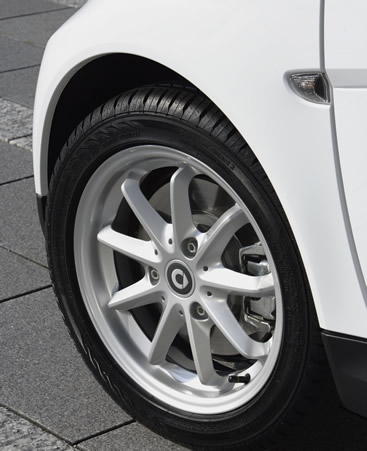« Volvo produces its 15 millionth Car | Main | IBM's New z10 Mainframe Computer »
February 24, 2008
Designing of Daimler AG Mercedes-Benz "smart fortwo"

Photo: Show car smart crosstown: CAD rendering of exterior with color-highlighted "Tridion" safety cell. A solid steel "Tridion" frame, left visible at the exterior as a major design element, completely surrounds and protects the passenger compartment, and defines the basic shape of the car as well.
The history of the smart is short. The smart city coupe with gasoline engine came onto the market in 1998, the diesel-engined version in 1999. The smart cabrio complemented the model lineup at a later stage. It was followed by the smart roadster, the smart roadster-coupe and the smart forfour -- all of them history today. This is because the brand is now fully concentrating on the archetype of the smart -- the two-seater car.
Giving concepts a concrete shape is a challenge that a designer must face time and time again. But no matter how many times the process is repeated, it can never become routine. Good design stubbornly resists any clear definition. This is largely because a product must first mature in people's perception before it can truly be considered as good design.

Thus giving a form to "things" is far from simple. Particularly when these "things" are not mere consumer goods, but elements in a deep, emotional relationship. A car, however, is quite a different matter. Here the design becomes the user interface to our emotions and to our demands on the subtle perception of the technical capabilities that the vehicle represents. Our subconscious expects faultless technology, and our sense of aesthetics wants to be wooed.

It didn't take long for Mercedes-Benz to decide what basic features a car of this kind must have: four wheels, two seats, an engine, and a length of approx 2.5 meters. That was back in 1981. Discussions took place, but the resulting proposals were not found to meet the safety requirements of Mercedes-Benz. Ten years passed and the project was put on ice again and again until Mercedes-Benz Design in Sindelfingen finally managed, in cooperation with the Advanced Design Center in the USA, to reconcile form with function in such a way as to satisfy the company's requirements and to ensure that the vehicle had emotional presence.

A greenfield factory was built where completely new approaches could be implemented at every stage of the development process.
The designers drew their inspiration from fashion, architecture, furniture, and also from icons of automotive history.
Ultimately, this process yielded the unique smart body concept that was to open up totally new possibilities: for example the variable color concept, whereby the smart owners can change the color of the plastic body parts of their vehicle, to give the car a new look whenever they see fit. |GlobalGiants.com|







Edited & Posted by the Editor | 10:34 AM | Link to this Post






